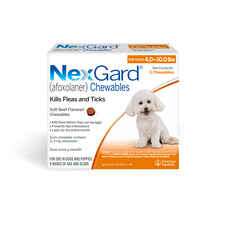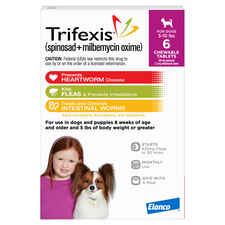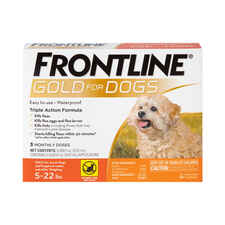How to Remove a Tick from a Dog
Doctor of Veterinary Medicine

While efforts are made to answer all questions as quickly as possible, if an immediate answer is required or if your pet is in need of urgent or emergency care, contact your pet's veterinarian immediately.
Doctor of Veterinary Medicine

You will receive an answer from Dr. Lindsay and our vet/tech team as soon as possible, usually the same day.
All answers are provided for informational or educational purposes only, and are intended to be a supplement to, and not a substitute for, the expertise and professional judgment of your pet's veterinarian.
It may be necessary to consult your pet's veterinarian regarding the applicability of any opinions or recommendations with respect to your pet's symptoms or medical condition.
CloseDoctor of Veterinary Medicine

An error has occurred, please reload the page and try again.
CloseWhile efforts are made to answer all questions as quickly as possible, if an immediate answer is required or if your pet is in need of urgent or emergency care, contact your pet's veterinarian immediately.
There is no answer related to your question
When it comes to ticks, you can never be too careful. Ticks are one of the most dangerous animals that can come into contact from our pets because they carry diseases that can be transmitted to your pet through feeding. The American dog tick, black-legged tick, lone star tick, and brown dog tick are among the many ticks across the U.S. that like to feed off of mammals like dogs. Unfortunately, these ticks can carry deadly diseases including lyme disease, anaplasmosis, babesiosis, ehrlichiosis, powassan virus disease, borrelia miyamotoi disease, Borrelia mayonii disease, rocky mountain spotted fever, and tularemia. That's why using Flea and Tick preventatives and constantly checking your dog for ticks is so vital to their health.
Step 1: Protect yourself
Make sure to put on gloves to protect yourself. The tick's infectious agents can get into a human's bloodstream through tiny breaks in the skin. It's better to be safe than sorry.
Step 2: Secure your pet
It's important to keep your pet still and calm when removing the tick. If possible, have someone help hold your pet to keep your pet relaxed and steady.
Step 3: Grab the tick
Using the tweezers, grip the tick as close to your pet's skin as possible without pinching your dog's skin. Try not to squeeze the tick with the tweezers, doing so may cause the fluids inside the tick to enter your pet's body, increasing the risk of infection.
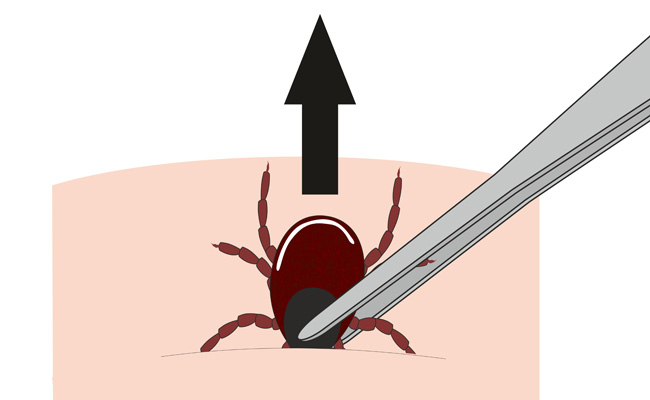
Step 4: Remove & kill the tick
In one motion, pull the tick straight out. Don't twist or wriggle it out because it can cause the tick's head and mouth part to detach. As soon as you remove the tick, drop it into a container with rubbing alcohol to kill it. Keep it in a container with a lid until you're sure your pet has not been infected. If your pet starts displaying symptoms of disease, your vet can test the tick and see if it is carrying a disease.
Note: If the head and mouth part do detach, DO NOT try and fish it out with the tweezers or your fingers. That will only cause more damage to your pet. Instead, let nature take its course. Your pet's body will treat it as a splinter and expel the remains. It will fall out on its own in a few days' time.
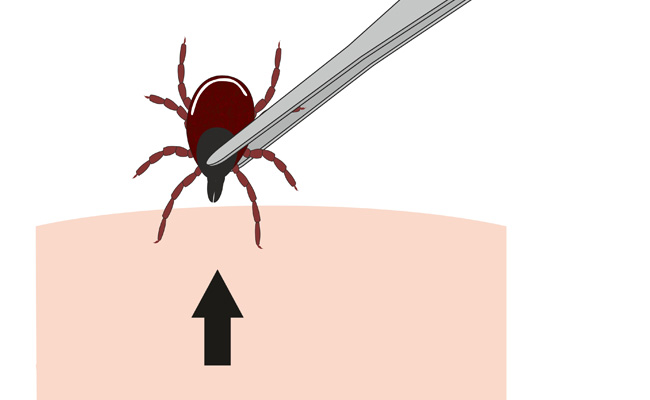
Step 5: Clean the bite
After safely removing and killing the tick, disinfect the site of the bite with antiseptic spray or wipes. Contact your veterinarian if the bite becomes inflamed or remains red.
 Swipe
Swipe


















